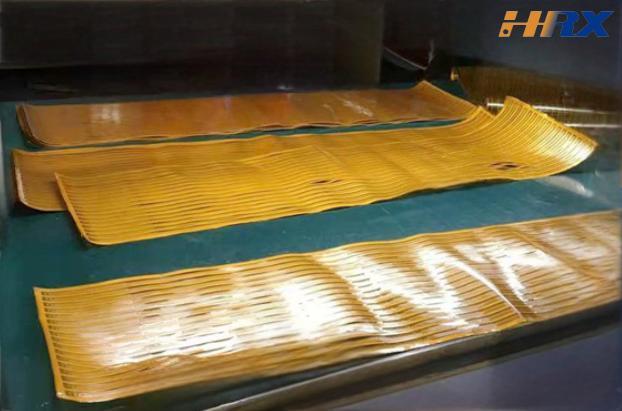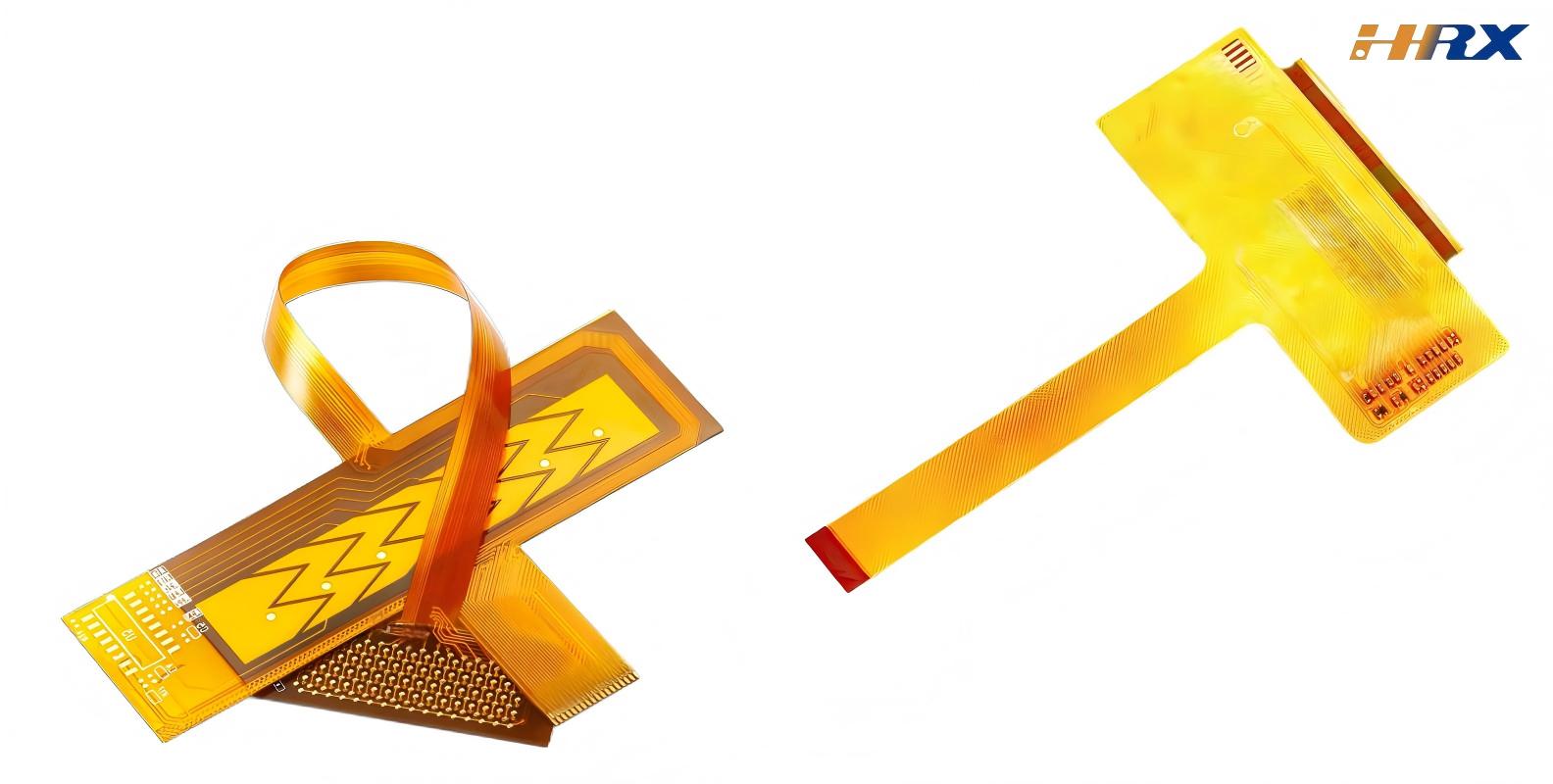Search
Key Considerations for Design, Production, and Quality Control of Long-Size Flexible Printed Circuits (FPCs)
- May 05,2025
-
Share
In the rapidly evolving electronics industry, Long-Size Flexible Printed Circuits (FPCs) have become a cornerstone for compact and innovative device designs. Their elongated form factor, however, presents unique challenges in design, production, and quality control. As Shenzhen Huaruixin Electronics Co., Ltd., a leading global ODM/OEM manufacturer specializing in FPC, PCB, and Rigid-Flex Printed Board solutions, we are excited to share our in-depth expertise on these critical aspects.

Design Considerations
1. Mechanical Design
Bend Radius Optimization: A crucial parameter in FPC design, the bend radius should ideally be 5 - 10 times the thickness of the FPC. For example, for a 0.3mm thick FPC, the minimum bend radius should be 1.5 - 3mm. Sharp bends can lead to conductor fractures and delamination, significantly reducing the FPC's lifespan. Incorporating stepped or curved designs at bending points helps mitigate stress concentration.
Tensile Strength Enhancement: Long FPCs are more susceptible to tensile forces during assembly and operation. Strain relief features, such as rounded corners at connection points and service loops, are essential to reduce tension. High-tensile materials like Polyimide (PI) films are preferred for enhanced mechanical durability.
2. Electrical Design
Signal Integrity Assurance: For FPCs transmitting high-speed signals, maintaining signal integrity is paramount. Utilizing differential pairs and precisely controlling trace impedance (usually around 100 ohms for differential pairs) are key strategies. In a recent high-end communication device project, our multi-layer FPC design with dedicated power and ground planes for shielding achieved excellent signal integrity.
Power Delivery Optimization: Calculate the current-carrying capacity of power traces based on width and copper thickness. For high-current applications, employ multiple parallel traces or increase the copper area to ensure stable power distribution and minimize voltage drops.
3. Layout Design
Symmetry and Balance: A symmetric layout helps evenly distribute stress during bending, preventing warping or twisting. Avoid unbalanced copper areas or component placement.
Component Placement Strategy: Strategically position components to minimize signal trace lengths and power connection distances, reducing signal attenuation and interference. Ensure easy access for testing and repair during production.
Production Considerations
1. Manufacturing Process Precision
Photolithography and Etching: Advanced photolithography techniques are essential for accurate circuit pattern transfer, with our equipment achieving a resolution of up to 25 microns. Strict control of etching solution composition, temperature, and time prevents over- or under-etching.
Lamination and Bonding: Automated alignment systems with ±0.05mm accuracy ensure proper layer alignment. Optimize bonding pressure and temperature according to adhesive type for strong layer adhesion.
Drilling and Plating: High-precision drilling equipment creates burr-free holes with accurate sizes and positions. The plating process guarantees uniform copper deposition and good adhesion for reliable electrical connectivity.
2. Efficient Production Workflow
Automated Handling Systems: Integrate automated systems to transport FPCs between workstations, reducing damage risk and improving efficiency.
Just-in-Time (JIT) Inventory Management: Implement JIT systems for raw materials to avoid shortages and excess inventory, optimizing production costs.
Quality Control Considerations
1. Visual Inspection
Conduct thorough visual inspections at multiple production stages using high-magnification microscopes. Check for surface defects like scratches, voids, delamination, and issues with circuit traces such as breaks, shorts, and uneven widths.
2. Electrical Testing
Continuity Testing: Verify proper connection of all circuit traces.
Insulation Resistance Testing: Check for electrical leakage between traces or layers.
Impedance Measurement: Ensure signal traces have the correct impedance. In a recent batch of 2000 FPCs, our electrical testing protocol achieved a defect rate of less than 0.3%.
3. Reliability Testing
Temperature Cycling Tests: Simulate thermal stress.
Humidity Testing: Evaluate moisture resistance.
Bending Fatigue Testing: Determine the number of bends the FPC can endure before failure.
Navigating the complexities of Long-Size FPC design, production, and quality control requires a combination of technical expertise and industry experience. At Shenzhen Huaruixin Electronics Co., Ltd., we are committed to leveraging our capabilities to deliver high-quality FPC solutions. We invite industry peers, new and old friends, to engage in discussions, share insights, and collaborate on driving the FPC industry forward. For more information on our services and products, visit www.hrxfpc.com

Let’s talk! We’ll provide the perfect solution for you!
-
 Huaruixin Electronics mainly produces printed circuit boards as the core business, to provide customers with one-stop solutions for FPC/PCB production, components sourcing and Assembly.
Huaruixin Electronics mainly produces printed circuit boards as the core business, to provide customers with one-stop solutions for FPC/PCB production, components sourcing and Assembly. - WHAT WE DO — PCB Design Solutions — Flex PCB Production — Components Sourcing — FPC&PCB Assembly
- PRODUCTS — Single Sided Flexible Circuits — Double Sided Flexible Circuits — Multilayer Flexible Cirucits — Rigid-Flex Circuits — FPC Assembly — PCB Assembly
- CAPABILITY — FPC Capability — Rigid-Flex Capability — PCB Capability — Assembly Capability
- Copyright © 2024 Shenzhen Huaruixin Electronics Co., Ltd. All Rights Reserved.
- Design By BONTOP


